Last Chance to Catch NYC's Holiday Notalgia Train
We met the voices of the NYC subway on our nostalgia ride this weekend!


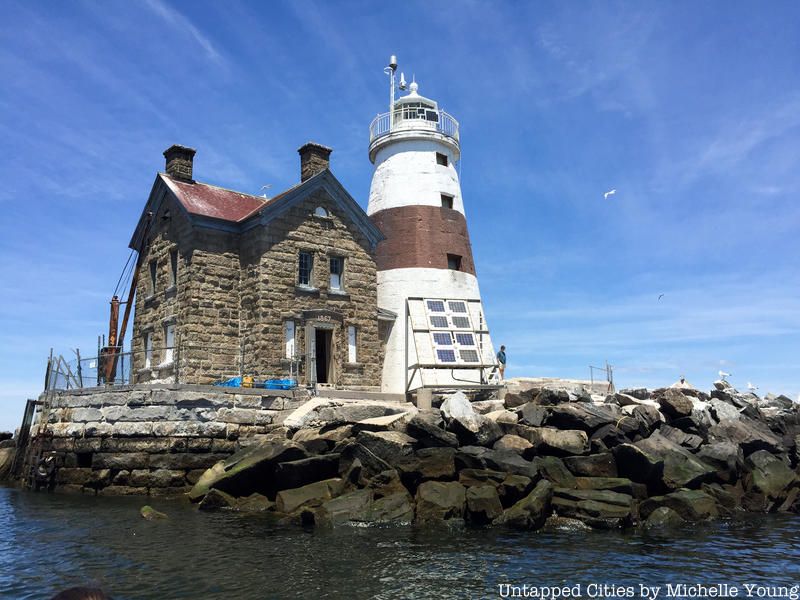
Port Washington, consisting of four villages — Baxter Estates, Manorhaven, Port Washington North, and Sands Point — is one of the most affluent communities in Nassau County with a lively downtown, numerous marinas and parks, and beautiful scenery. Baxter Estates was originally a homestead settlement in 1673 known as “Cow’s Neck.” In 1741, Oliver Baxter purchased the property, which at the time was believed to have been the location of a Matinecock Indian village. Port Washington became a significant sand-mining town with easy access to Manhattan, attracting figures like the Vanderbilts and mining magnate Daniel Guggenheim to build properties in Sands Point.
Today, Port Washington offers scenic views of both the water and a number of historic sites like the John Philip Sousa House, where the famous composer lived for the last 20 years of his life, and the Thomas Dodge Homestead, dating back to 1721. Here is our guide to historic places to visit Port Washington!
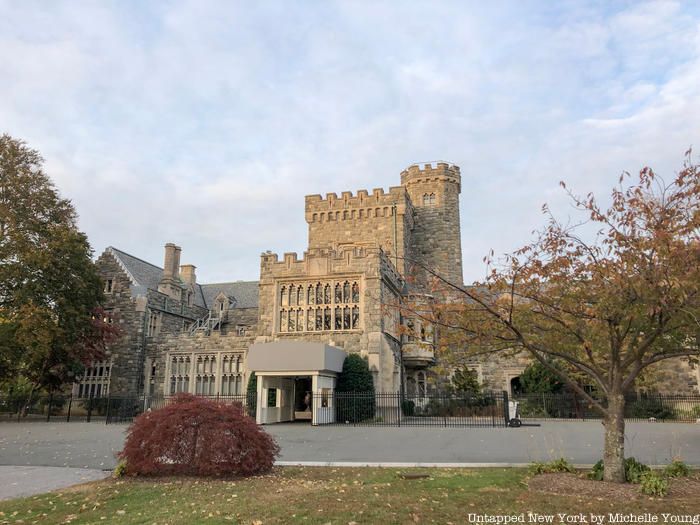
Hempstead House
The Sands Point Preserve contains elegant and grandiose relics of the Gold Coast period of the early 20th century. The Gold Coast period saw the development of huge mansions along the Long Island Sound, and the Sands Point area gained fame as “East Egg” in F. Scott Fitzgerald’s The Great Gatsby; nearby Great Neck inspired the competing “West Egg” in the novel. Sands Point Preserve is a 216-acre park with hikes and walks, landscaped gardens, and a number of historic sites and structures.
The Tudor style Hempstead House, Castle Gould, Mille Fleur and Falaise are four mansions that sit on the former grounds of the Guggenheim Estate. The first home was started by Howard Gould, an American financier, and son of railroad magnate Jay Gould. The original plan was to build a replica of Kilkenny Castle in Ireland and call it Castle Gould. It was designed by architect Augustus N. Allen and completed in 1904. Upon completion, Gould’s wife Katherine Clemmons decided that the castle did not suit her, so Gould proceeded to build Hempstead House.
 Hempstead House, Photograph Courtesy of The Sands Point Preserve Conservancy
Hempstead House, Photograph Courtesy of The Sands Point Preserve Conservancy
Although the Goulds chose not to live in their castle, the structure served as a stable, carriage house, and servants’ quarters. It now houses the Visitor Center, Great Hall, and a 7,000-square-foot New York State-certified sound stage. With vaulted ceilings and wrought-iron chandeliers, the Great Hall is often used for private events.
Hempstead House was designed by architects Hunt & Hunt in 1912. The 50,000-square-foot three-story mansion is 225 feet long and 135 feet wide with forty rooms, including a 60-foot-tall entry foyer. Significant features of the home include a Wurlitzer Opus 445 Theatre Organ, authentic Tudor and Jacobean antiques imported from Europe, and a Billiard Room which originally featured a gold-leaf ceiling. After the Goulds, it was owned by Daniel Guggenheim, an American mining magnate.

Falaise, Photograph Courtesy of The Sands Point Preserve Conservancy
Following Daniel Guggenheim’s death, his wife Florence closed Hempstead House and built the smaller mansion Mille Fleur. The Hempstead House was open to children evacuated from World War II until foster homes could be found for them. Florence then sold the mansion to the Institute of Aeronautical Sciences, which was then purchased by the U.S. Navy for a Naval Training Device Center.
The fourth mansion, Falaise, was presented to Daniel’s son Harry F. Guggenheim and his wife Caroline Morton in 1923. Falaise was built by Frederick J. Sterner along with Polhemus & Coffin in the style of a 13th-century Norman manor house. The home includes an enclosed cobblestone courtyard, a round tower, and thickly mortared brick walls, and the mansion’s medieval atmosphere is conveyed through archways, thick wood beams textured plastered walls, and carved stone fireplace mantels. 16th and 17th-century woodcarvings, sculptures, columns, gates, Renaissance paintings are found in Falaise, as is a notable rose garden.
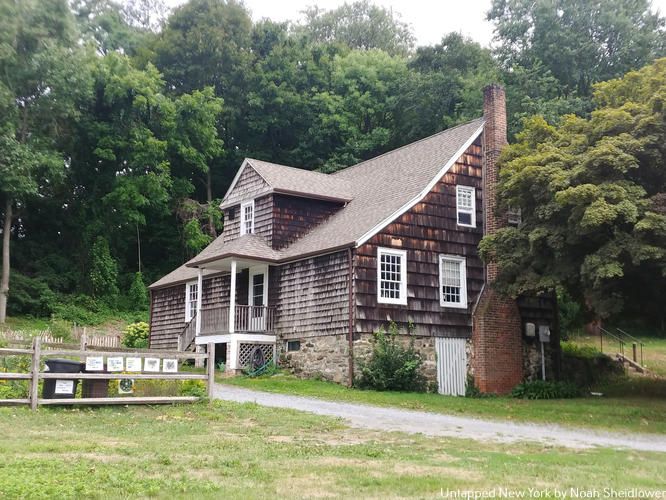
Thomas Dodge Homestead
The Thomas Dodge Homestead is one of Nassau County’s oldest structures, dated to 1721 with additions completed in approximately 1750 and 1903. Located by the Mill Pond, the homestead originally sat on a 700-acre property owned and farmed by Thomas Dodge. Much of the property was sold from 1718-1730 to Dodge’s cousins and siblings. The Samuel Dodge House, named for Thomas’ cousin, is almost 300 years old and still stands on the corner of Harbor and Sandy Hollow Roads. It was once the home of Port Washington’s first post-mistress, Susie Bruner.
The Thomas Dodge House 1 1⁄2-story, L-shaped building features a heavy timber-frame sheathed with natural cedar wood shingles. The home also contains original low ceilings and Victorian-style furniture, as well as a barn and chicken coop. It is operated as a historic house museum by the Cow Neck Peninsula Historical Society, and it was listed on the National Register of Historic Places in 1986. The Historical Society often leads tours under non-pandemic conditions.

Execution Rocks Light Station
The Execution Rocks Light Station is a lighthouse in the Long Island Sound between Sands Point and New Rochelle. The 55-foot-tall lighthouse features a granite tower painted white with a brown band in the middle. The small island it stands on also hosts an uninhabited stone keeper’s house. You can easily see the lighthouse from Sands Point and the Throgs Neck Bridge or by boat out on the sound. Historically Significant Structures, Inc., the non-profit dedicated to the lighthouse’s restoration, led tours of the lighthouse and will hosted overnight stays on the island before Covid-19.
The lighthouse today is a well-known spot located on the National Register of Historic Places, though its dark history is shrouded in legend. It has been believed that slaveowners on Sands Point would chain troublesome slaves to rocks on the island during low tide and let them drown, or that British soldiers did the same to American revolutionaries, thus giving it the name “Execution Rocks.” There is no substantial evidence to back up these claims. The name likely comes from the treacherous rocks that “execute” passing ships that get too close. The lighthouse was completed in 1849 after Congress approved its creation. The island’s unfortunate history continued when it endured both a fire and a shipwreck years after. Additionally, serial killer Carl Panzram claimed to have raped and killed ten sailors before dumping their bodies by the lighthouse.
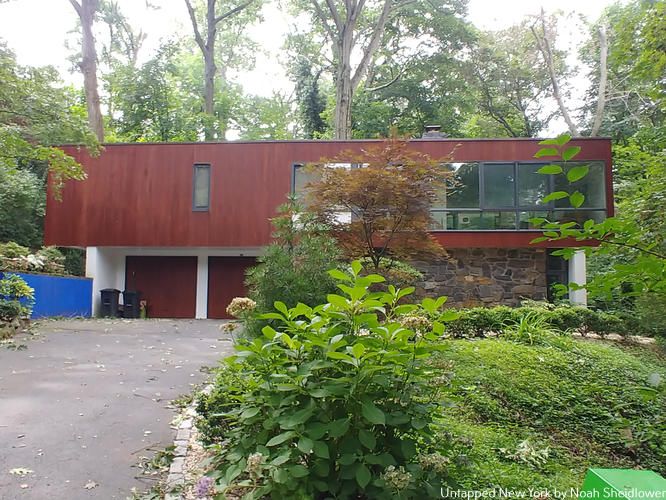
The William Landsberg House is a 1951 home listed on the National Register of Historic Places and designed by architect William Landsberg himself. Landsberg is known for his many homes across Long Island and Westchester, including a number designed with Bauhaus architects Marcel Breuer and Walter Gropius. The “floating” rectangular-box structure incorporated elements of a contemporary Japanese-American lifestyle with vertical cypress panels, custom-sized large windows, and a tatami guest room. The kitchen and living room were expanded between 1962-1963, and the kitchen was updated with a large island with teppanyaki cooking appliances. Landsberg lived there until his death in 2013 and it remains a private residence.
According to Architect Magazine, Japanese elements within the home include “a large closet in the entry vestibule for shoes since slippers are worn in the house; a narrow outdoor wood deck at the rear of the house that has the same depth, three and a half feet, as the overhanging roof, and is level with the interior floor, providing a dry place to put on and remove shoes, like an engawa in a Japanese house; cypress wood paneling in the master bedroom suite; and, in the master bathroom, a separate wet room with shower and large ofuro-style tub (a deep soaking tub, traditionally made out of wood; in this case, a modified fiberglass tub without an overflow).”
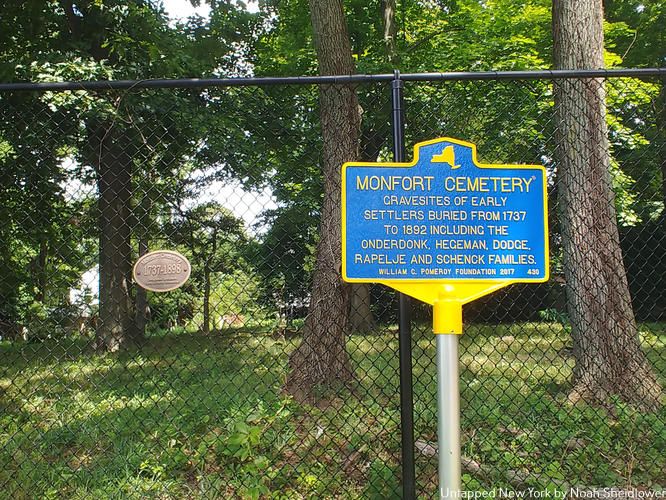
Monfort Cemetery
The Monfort Cemetery is a historic cemetery at the intersection of Port Washington Boulevard and Main Street that contains 118 graves of early Dutch settlers to Cow Neck. The graves, which date from 1737 to 1892, are arranged in thirteen rows by family. Prominent Dutch families buried at the cemetery include the Onderdonk, Schenck, Hegeman and Dodge families.
Buried in Monfort Cemetery are figures like Martin Schenck, one of the signers of North Hempstead’s Declaration of Independence, Andrew Onderdonk, a New York State Senator, and Joseph Onderdonk, who was present at George Washington’s inauguration. Most headstones were constructed using sandstone or marble, with early markers including “soul effigies” and later ones reading “In Memory” or “In Memoriam.” The namesake Monfort family also has ancestors buried in the cemetery. The family-owned the cemetery for decades before Burtis Monfort transferred it to the town of North Hempstead in 1984.
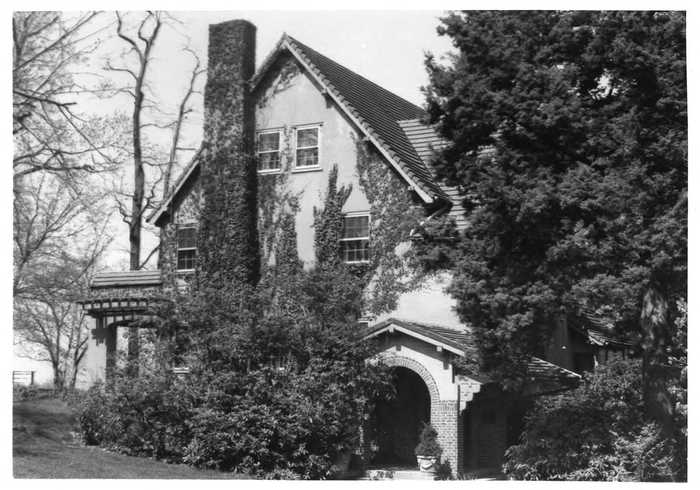 Courtesy of the National Parks Service
Courtesy of the National Parks Service
The John Philip Sousa House, also known as Wildbank, is a historic 1907 Sands Point home where composer and bandleader John Philip Sousa lived from 1912 until his death in 1932. The private 2-1/2 story home overlooks Manhasset Bay and features a brown stucco exterior with a red tile roof. Sousa is best-known for his over 130 marches, including “The Washington Post,” “Stars and Stripes Forever,” and “Semper Fidelis.” While living at the Sands Point home, Sousa composed other notable marches like “U.S. Field Artillery,” “The Gallant Seventh,” and “Minnesota March.” He was also promoted to the permanent rank of lieutenant commander in the naval reserve in the 1920s. The house was declared a National Historic Landmark in 1966 and remains a private residence.
Sousa’s legacy also lives on at Port Washington’s John Philip Sousa Elementary School, as well as the John Philip Sousa Memorial Band Shell in Sunset Park. The band shell often hosts musical performances like the Port Washington Community Concert Band.
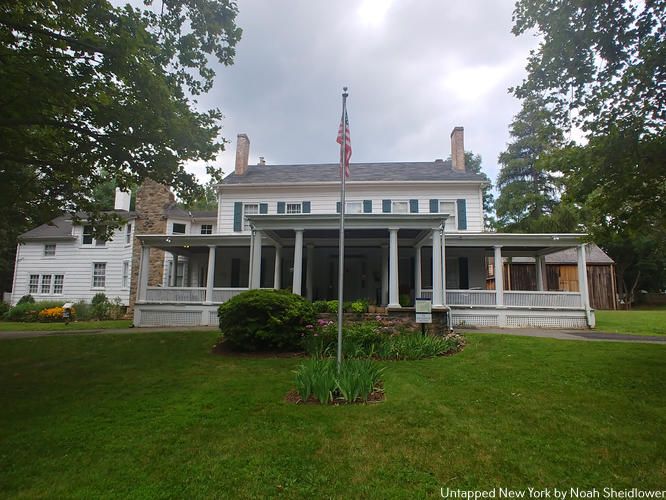
Sands-Willets Homestead
The Sands-Willets Homestead is a historic home and house museum operated by the Cow Neck Peninsula Historical Society. The two-story building contains twenty rooms as well as an enlarged porch and porte-cochere. The original west wing dates back to 1735, and a Greek Revival-style portion was added in the mid-19th century.
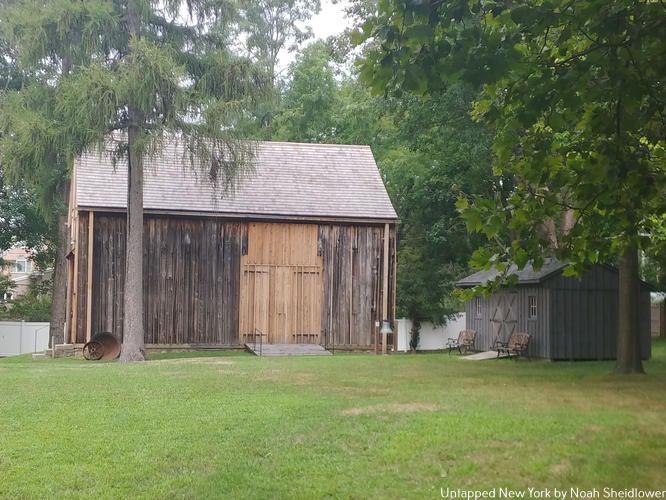
Sands-Willets Barn
The home is named for the Sands family of merchants and farmers who built and lived in the home until around 1845, as well as the Willets family, a Quaker and abolitionist family who purchased the original Sands home and added a new building to the east. The homestead also includes a historic barn dated to the late 17th century, as well as a small garden. The Sands Barn is believed to have been built in 1690, and it was painstakingly disassembled and relocated in 1978.
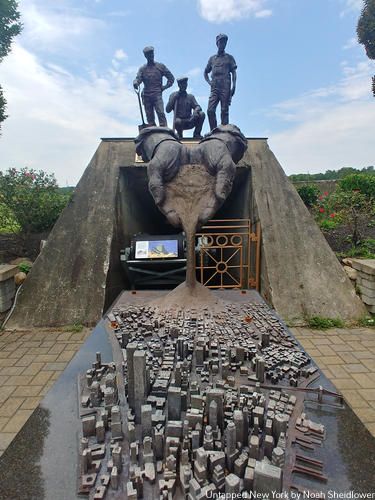
Sandminers Monument
Sandminers Monument Park is a tribute to the sand miners of Port Washington. According to the memorial’s website, the sandbanks of Port Washington were formed more than 20,000 years ago when retreating glaciers left behind deposits of glacial sand and gravel. Port Washington had the largest sandbank east of the Mississippi River. Over 140 million yards of sand were delivered from Port Washington to New York City since 1880, used to construct the sidewalks, skyscrapers, water tunnels and other infrastructure. The monument featured in the park is a sculpture of three sand miners looking into the distance holding sand mining equipment, and in front of the three men is a replica on downtown Manhattan with two hands holding sand above it to symbolize Port Washington’s significance in the city’s development. The site features many maps of Long Island’s sand mining locations as well as a look into construction efforts in the city.
The Sandminers Monument Park is located to the east of Harbor Links Golf Course and southwest of North Hempstead Beach Park. The latter park is a 34-acre park that includes Bar Beach, as well as a promenade, playground, and ball courts. Currently, the beach is only open to Nassau County residents, but the Monument Park is open to all visitors.
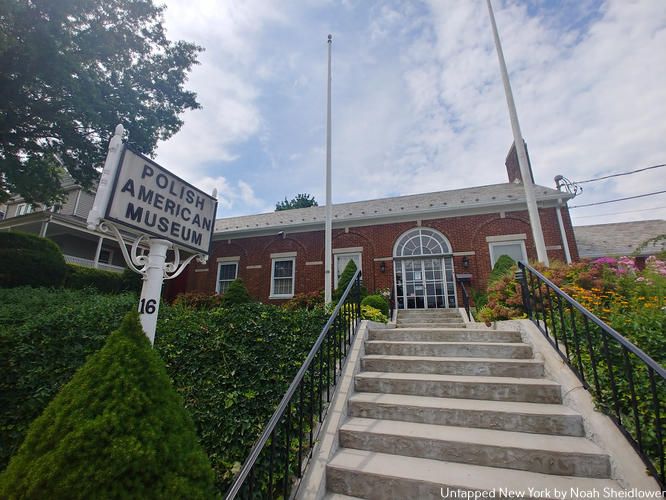
Polish American Museum
Although currently and temporarily closed, the Polish American Museum on Bellevue Avenue is a museum focusing on the achievements of people of Polish heritage in the United States. Opened in 1977, the museum includes everything from war memorabilia to Polish medals and weapons and Polish books.
Among the museum’s collection is a blue-and-white striped jacket of a Polish concentration-camp inmate who was held by the Germans in World War II, plaster replicas of Frédéric Chopin’s death mask, Polish ceramics and plates, and letters and official documents. Rooms throughout the museum are dedicated to significant Polish figures like Marie Curie and Lech Wałęsa. The museum also hosts talks with ambassadors, Chopin concerts, and military lectures.
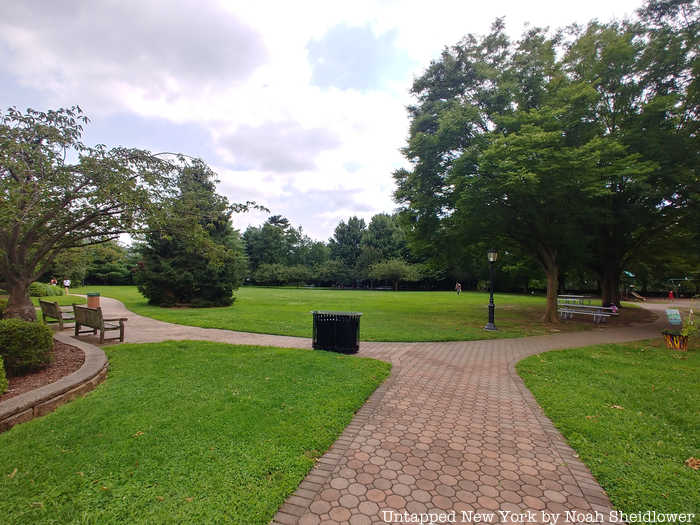
Blumenfeld Park
Port Washington’s Main Street is one of the largest in Nassau County, with dozens of restaurants, shops, markets, and cultural centers. The historic downtown extends to Manhasset Bay, and sites like the Town Dock and Sunset Park, which houses the Sousa Band Shell, are popular destinations. Nature lovers also flock to Blumenfeld Family Park, with flourishing gardens.
Popular restaurants along Main Street include seafood restaurant Louie’s Grill & Liquors, French eatery La P’tite Framboise, Japanese eateries like Restaurant Yamaguchi, Aiko, and Bonsai, and Thai eateries like Port Thai Place. Although currently closed, Landmark on Main Street, home of the 425- seat Jeanne Rimsky Theater, often puts on concerts with figures like Jeanine Tesori, Joan Osborne, and Rufus Wainwright.
Next, check out 10 Historic Mansions to Visit on Long Island from the Gold Coast Era and 10 Beautiful Places to Discover in Nassau County, Long Island
Subscribe to our newsletter